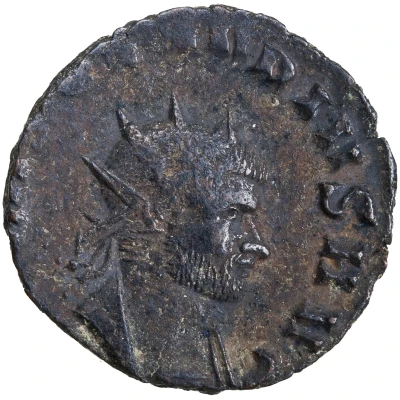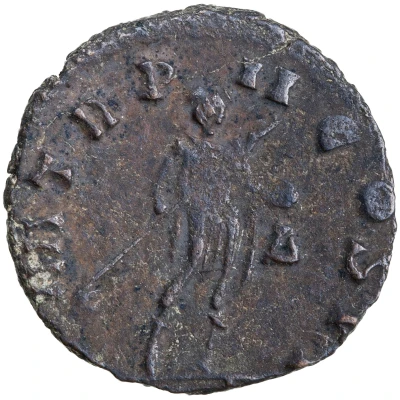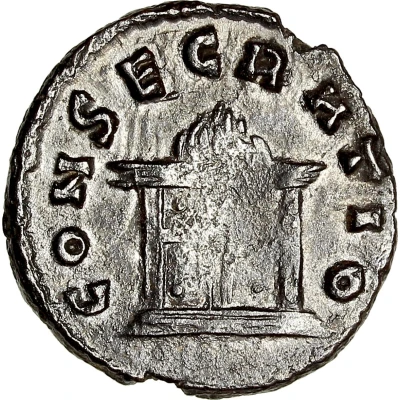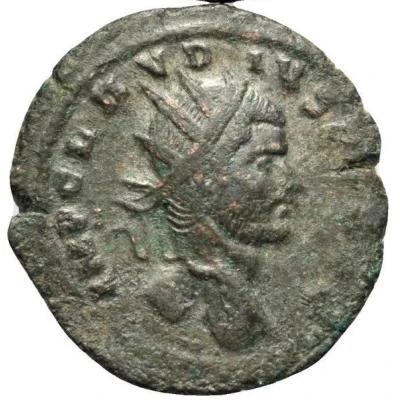
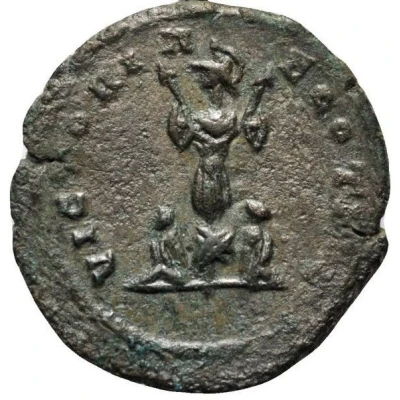

© SanglierFSE
Antoninianus - Claudius II VICTORIAE GOTHIC
270 year| Silver | 3.97 g | 22 mm |
| Issuer | Rome › Roman Empire (27 BC - 395 AD) |
|---|---|
| Emperor | Claudius II (Marcus Aurelius Claudius) (268-270) |
| Type | Standard circulation coin |
| Year | 270 |
| Value | Antoninianus (1) |
| Currency | Antoninianus, Reform of Caracalla (AD 215 – 301) |
| Composition | Silver |
| Weight | 3.97 g |
| Diameter | 22 mm |
| Thickness | 1 mm |
| Shape | Round (irregular) |
| Technique | Hammered |
| Orientation | Coin alignment ↑↓ |
| Demonetized | Yes |
| Updated | 2024-10-05 |
| Numista | N#73221 |
|---|---|
| Rarity index | 92% |
Reverse
Trophy (helmet on the left); on each side, a captive in oriental costume seated, hands tied behind the back.
Script: Latin
Lettering: VICTORIAE GOTHIC
Interesting fact
The Antoninianus coinage was introduced by the Roman Emperor Caracalla in 215 AD, and it was named after him. However, the coin , the Antoninianus - Claudius II (VICTORIAE GOTHIC) (270), was issued during the reign of Claudius II, who ruled the Roman Empire from 268 to 270 AD. This means that the coin was issued about 50 years after the Antoninianus coinage was first introduced. It's interesting to note that the Antoninianus coinage was introduced as a response to the inflation that was occurring in the Roman Empire at the time. The coin was meant to be a more affordable alternative to the gold coins that were being used, and it was made of silver, which was a more accessible metal. The Antoninianus coinage was widely used throughout the Roman Empire and was an important part of the Roman economy for many years.
